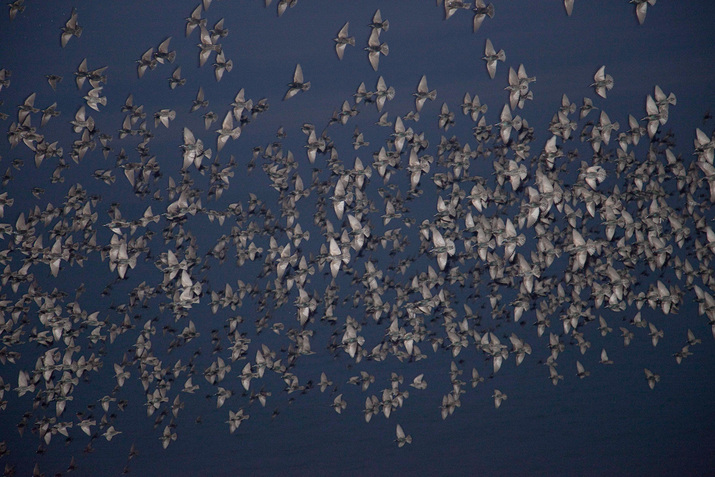
R
E
V N
E
X
T
The heart of photography is a meeting point of opposing forces—past and present; positive and negative; creation and disappearance. Hence, every photograph contains traces of a drama far greater than itself. In Japan, perhaps more than anywhere else, generations of photographers have pursued the medium’s transcendental possibilities, hoping to derive the secrets of existence through light and lens.
In the last two decades, few photographers have apprehended the sublime as masterfully as Rinko Kawauchi (b. 1972), who was virtually unknown before the debut of a trio of photobooks in 2001 that shot her to fame. Unlike predecessors like Daido Moriyama, whose harsh, monochrome snapshots she has cited as an inspiration, Kawauchi’s early works established a trademark style of soft colors, delicate lighting and minimalist compositions that conveyed surprisingly profound insights about the everyday. Her tender examinations of microcosms—a droplet of water on a lily leaf, the fractal patterns in a churning whirlpool—seemed to hint that every little thing holds the truth of humanity’s condition.
As with many of her contemporaries, the 2011 Tōhoku earthquake and tsunami marked a crucial turn for Kawauchi. If her earlier work sought to behold the world, her subsequent output has mused upon its destruction. Visiting the disaster site, Kawauchi responded with Light and Shadow (2012), a photobook about a pair of pigeons who circled above the ruins—one black, one white, representing the twin forces of life and death. Subsequently, Kawauchi completed a long-running project in Japan’s volcanic Aso region, photographing yakihata, a 1300-year-old farming ritual of setting fields ablaze. Using a large format camera to capture flames arcing into the twilight, Kawauchi produced her virtuosic monograph, Ametsuchi (2013). "Witnessing the landscape completely burnt, I was seized by the illusion that I myself had burnt up,” she wrote in its text, adding, "It was a refreshing sensation, as if the self that I had been up until then was no longer—that I had been reborn.”
Rinko Kawauchi’s newest monograph, Halo (2017), travels further into the void. In contrast to her lucent signature style, Kawauchi bound Halo under a dark cover with black pages, and almost all of its photos are set at night. The photographer wields darkness the way a composer uses silence to pace a score, slowly unveiling the work’s main subjects—murmurations of starlings by the coastline and a 500-year-old Chinese celebration called dashuhua, when villagers hurl molten iron against stone walls to create showers of sparks—in between languid shots of the inky ocean and falling rain. Often the only illumination is the flash from Kawauchi’s camera, catching drops of water like drifting stars.
In Kawauchi’s photographs, time is not a linear trajectory thrusting forward into empty, man-made space, but moves in circular motions. Midway through the book’s sequence, light streams through: daybreak sifts through a vale of trees and in another image, Kawauchi reveals an unbroken ring of light—a halo. This brief moment feels like taking a breath. Like Kawauchi’s migratory birds, the sun always returns; nothing is truly ever lost.
Still, the artist’s notes in the final pages of Halo reveal a sense of alienation amid an increasingly troubled world, bringing into sharper relief the work’s underlying social commentary. The shadowed mass of starlings makes her think about “the darkness that resides in our Internet-obsessed society,” she writes. Contemplating the dashuhua, she remarks that the villagers, rained upon by molten drops, appear as “warriors battling an unknown entity”—something she compares to the struggle of poverty. She reflects: “In spite of these dire conditions, we still find ourselves yearning to witness beauty. Our ceaseless desire to do so is like a prayer.”
Photography is a form of worship. The creation of every photograph at once affirms our existence, acknowledges our fragility and forms the edge of our understanding. Kawauchi concludes, “I fix my eyes on the pitch dark sea, and feel as if the dark ocean was asking me: did you find what you were looking for? I find no answer. Instead, I click the shutter button.” The truth must be located somewhere within, between the breathless moment of first light and the last instant before it disappears.
To read more of ArtAsiaPacific’s articles, visit our Digital Library.








